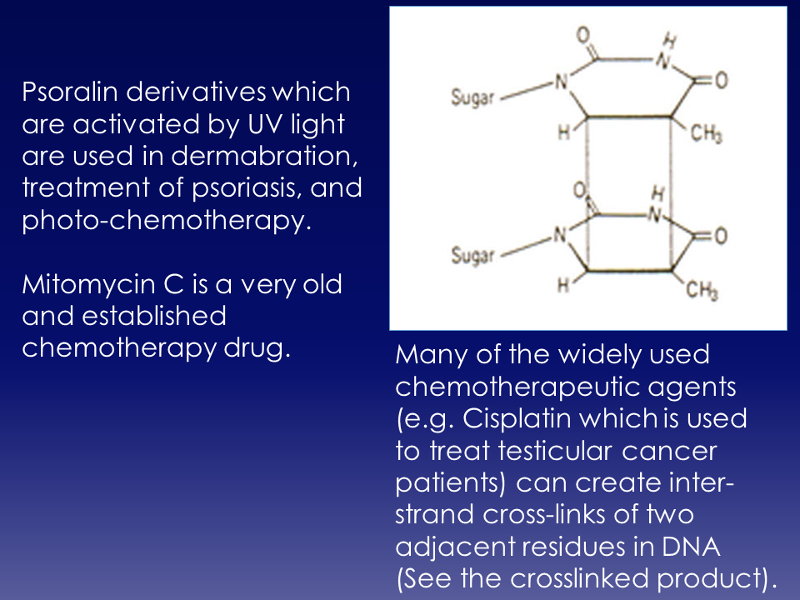
Mechanisms of Mutation
Prerequisite Material
Recall Objectives: Each first year medical student is expected to be able to:
Reference
Textbook of Biochemistry by Devlin, 7th edition, pp. 164-167
This review will focus on the types, causes, and consequences of mutation.
The following table displays schematics illustrating the different types of mutations. (The mutated nucleotide in the double-stranded DNA is in bold red and underlined.)

Agents that cause mutations are mutagens. We will focus on mutatgens which can alter the base-pairing properties.

Chemical agents that change normal base-pairing can generate mutations. These chemicals can be further classified according to their mechanism of actions.
A. Chemicals that deaminate amino groups on the bases to keto groups. e.g. A to hypoxanthine (HX), G to xanthine (X), C to U. The resultant products usually will have a different base-pairing property (see information below in the box). HX will base pair with C and U will base pair with A. X has similar base pairing property as G. Deamination can be chemically induced, spontaneous, or Induced by reactive oxygen species that are produced as by-products of oxidative metabolism.

Examples of deamination on the subsequent DNA replication products
B. Chemicals that change a base by covalent modifications.The following are some examples.
|
Alkylating agents such as ethylene oxide and Benzo[ a ]pyrene in cigarette smoke or coal tar. Modification of guanine by Benzo[ a ]pyrene would result in a distortion of the DNA helical structure. Upon replication, the DNA product would contain an insertion. |
|
|
|
Reactive oxygen species can modify guanine residues. |
|
Ethylene oxide modifies guanine (G) residues, leading to the formation of ethylguanine (eG) which pairs with thymine. |
An example of the base sequence of the DNA product following a G -> eG mutation:

C. Chemicals that cause cross-linking of DNA strands.
Crosslinking of DNA can lead to mutations during subsequent replication or transcription. However, as indicated in the table below, there are several medical treatments that also take advantage of this phenomenon to stop replication of abnormal or cancer cells.

D. Radiation damage
UV and X-ray radiation can result in:

Mutations of a single nucleotide can result in:
The following two diagrams present examples of the different mutations. The amino acid coded by the trinucleotide is shown in brackets below the nucleotide sequence.



All images created with resources in the public domain on behalf of the Undergraduate Medical Education office, School of Medicine, University of Texas Health Science Center at San Antonio.